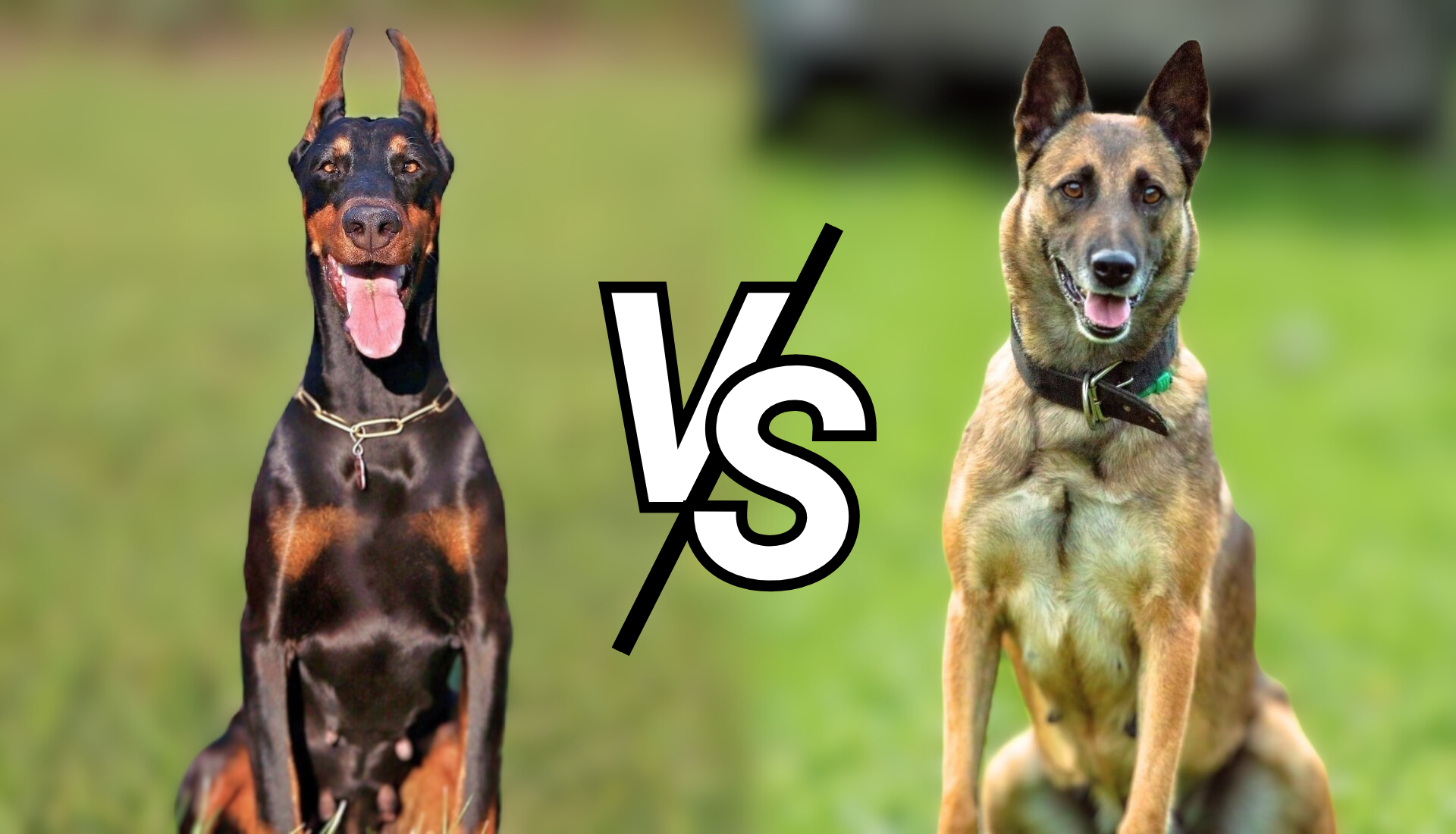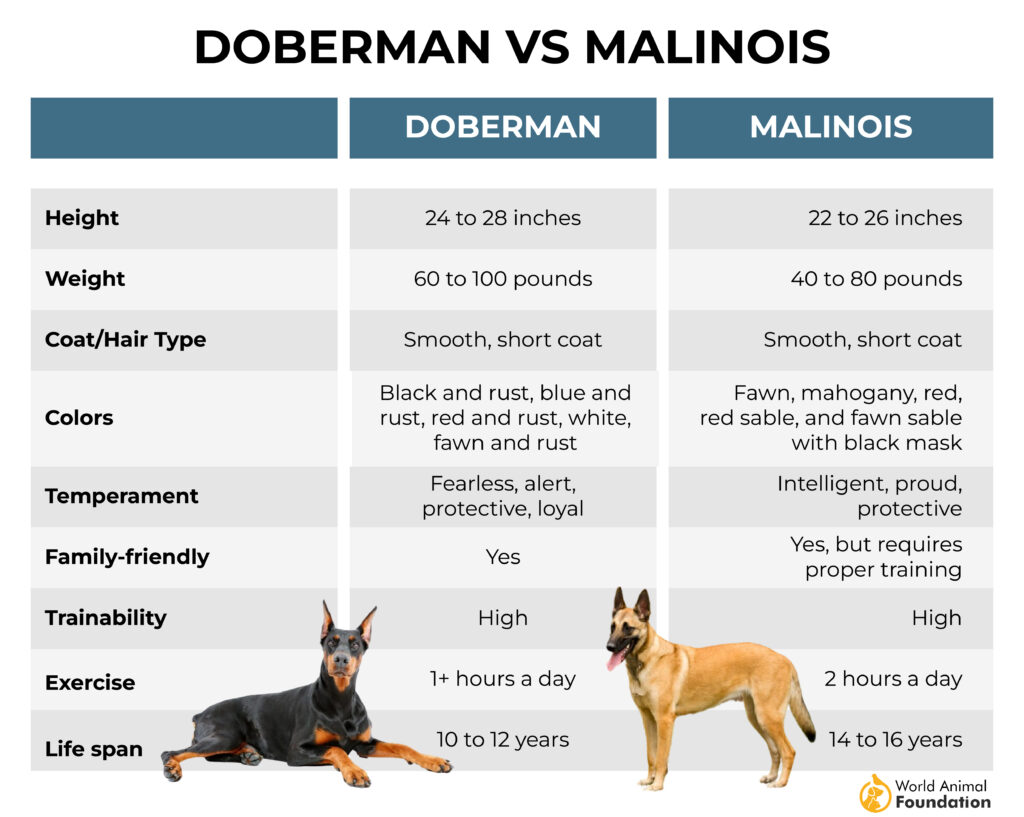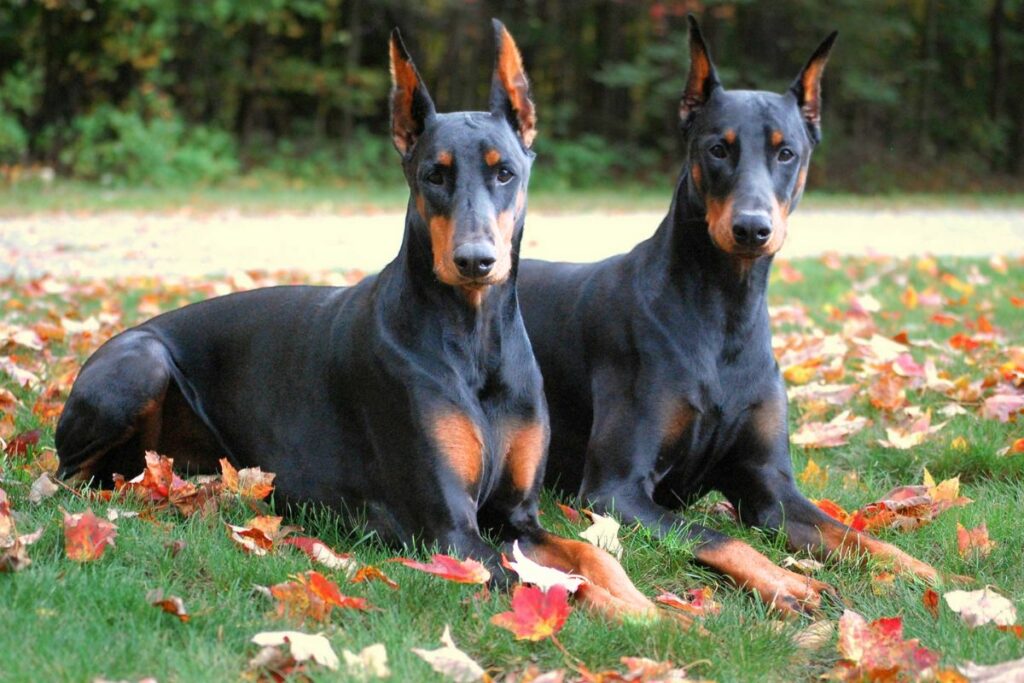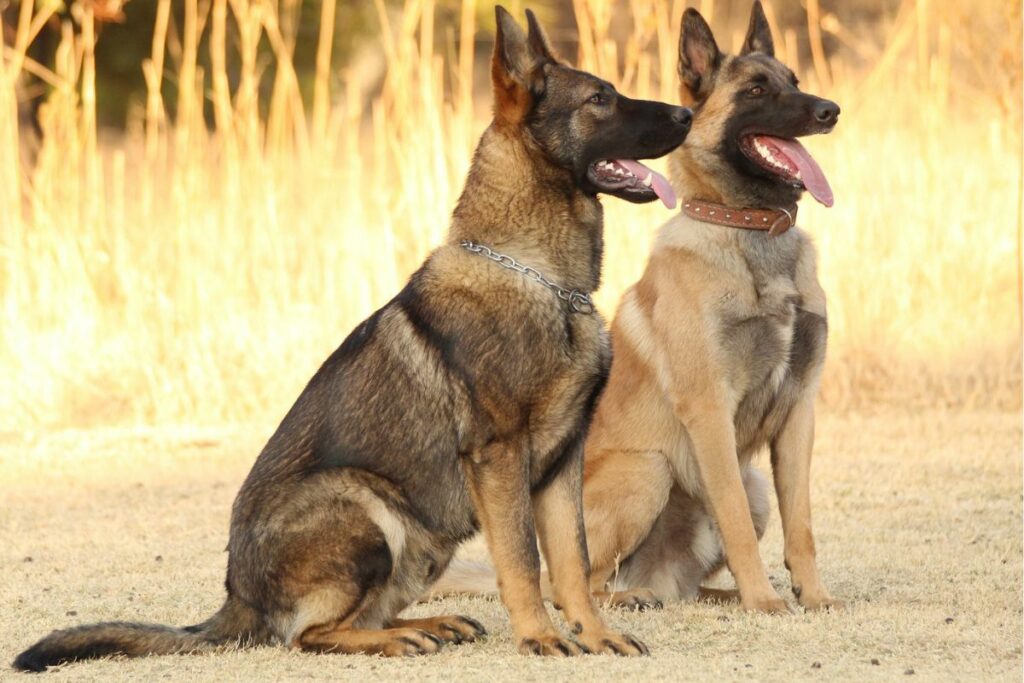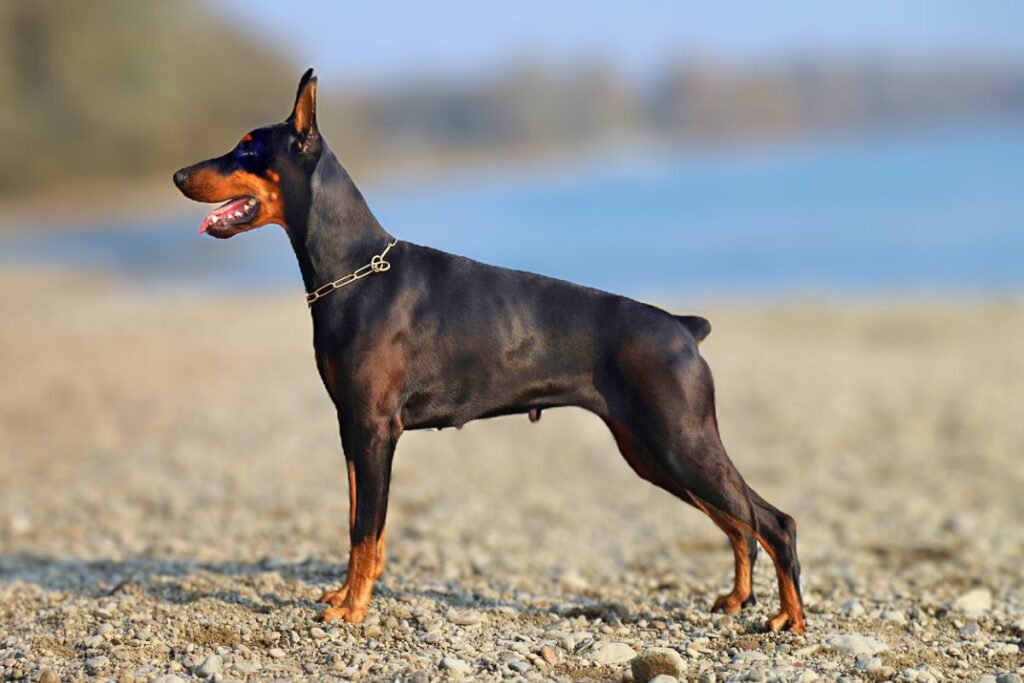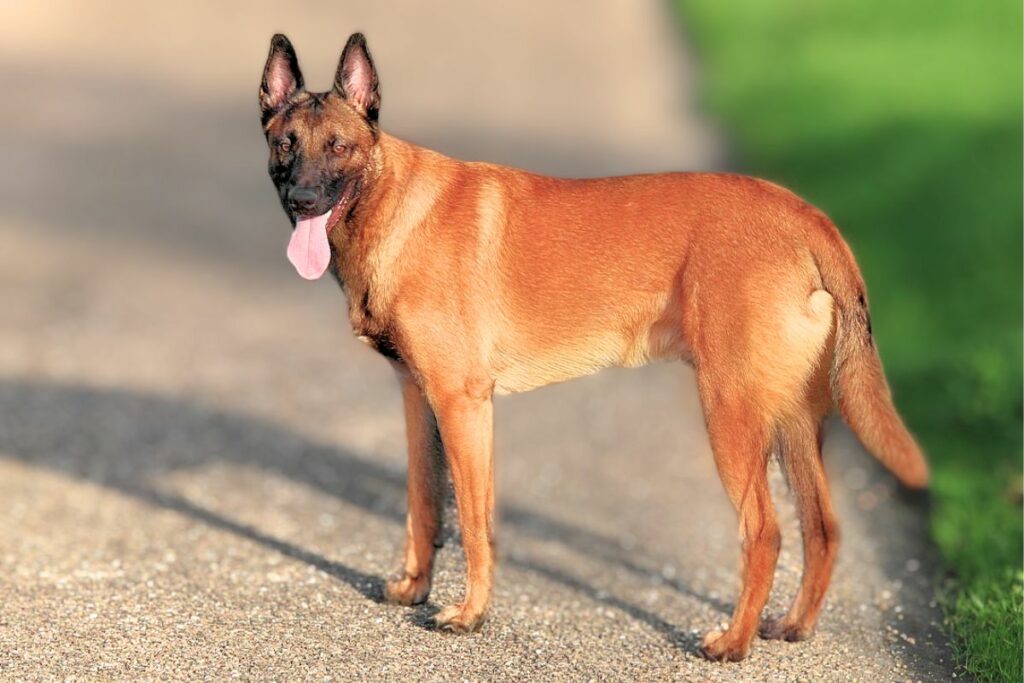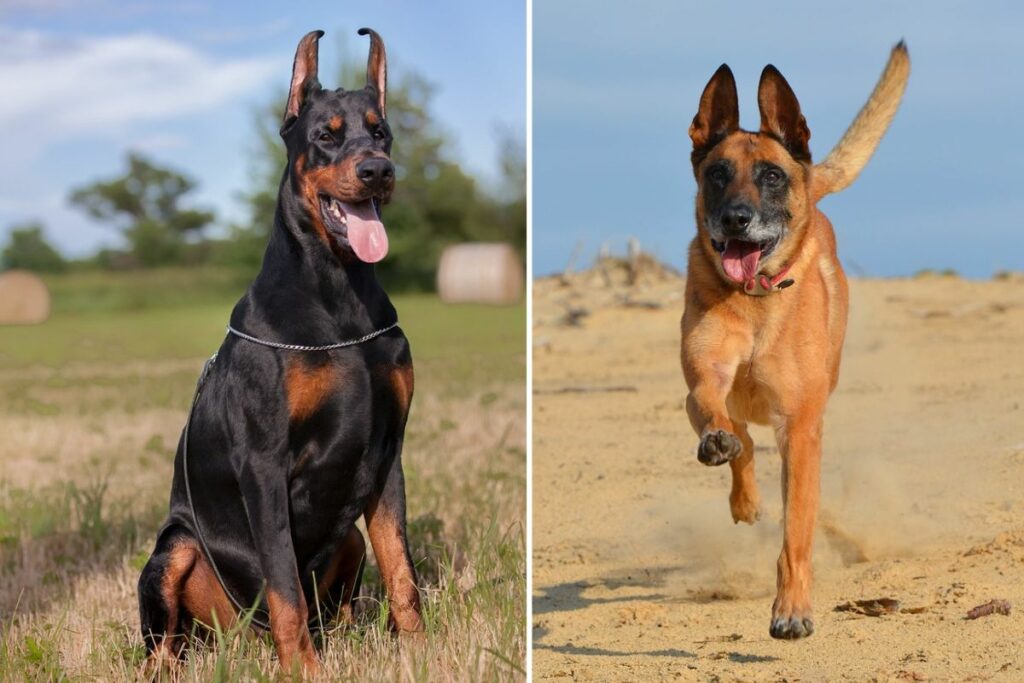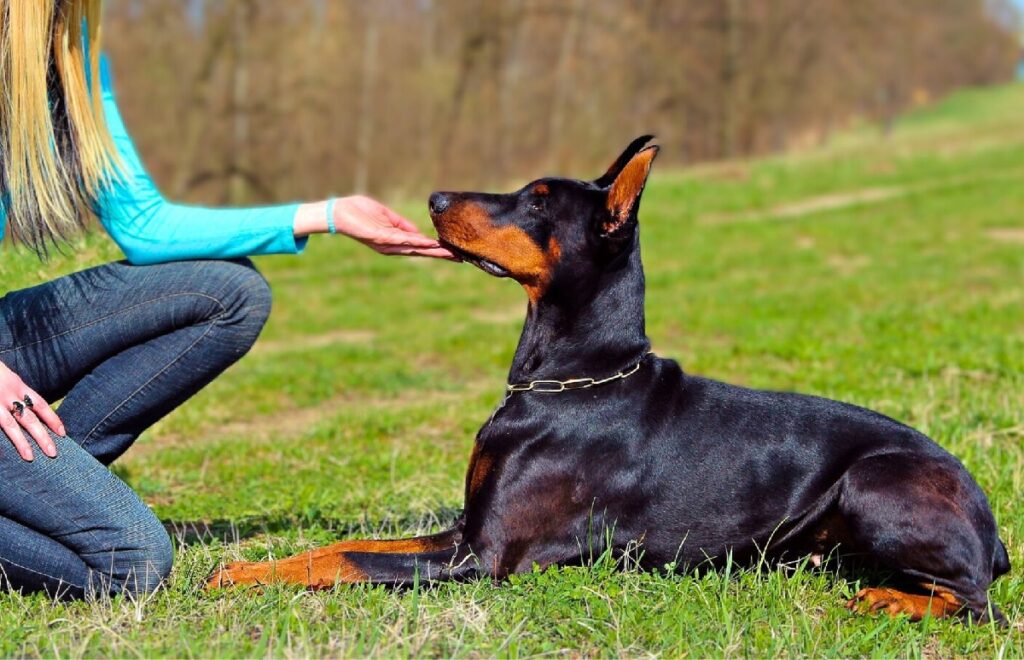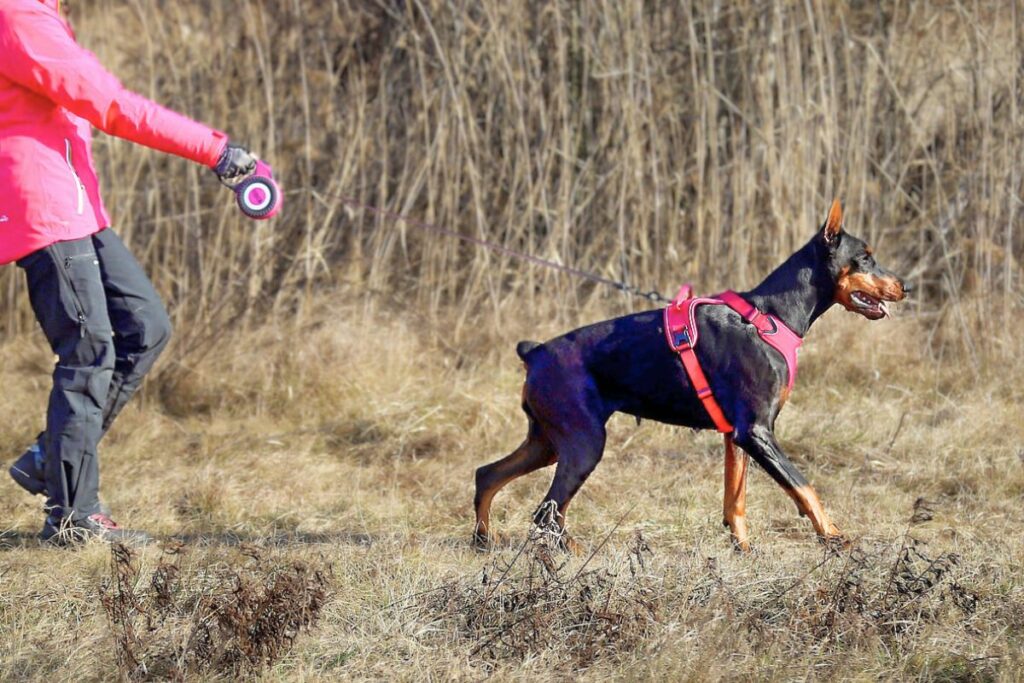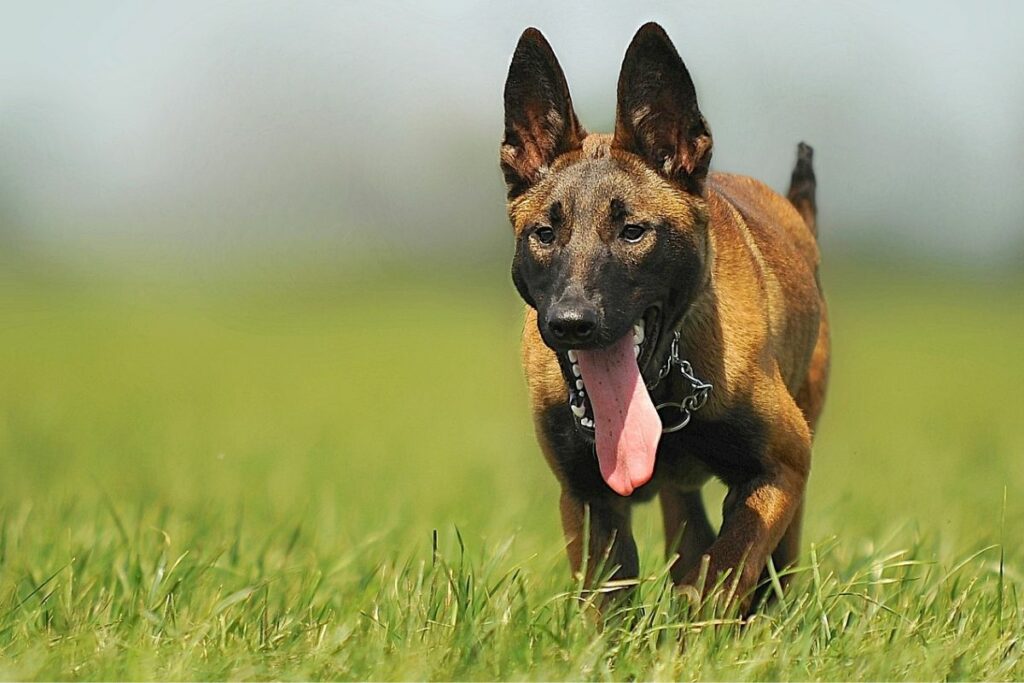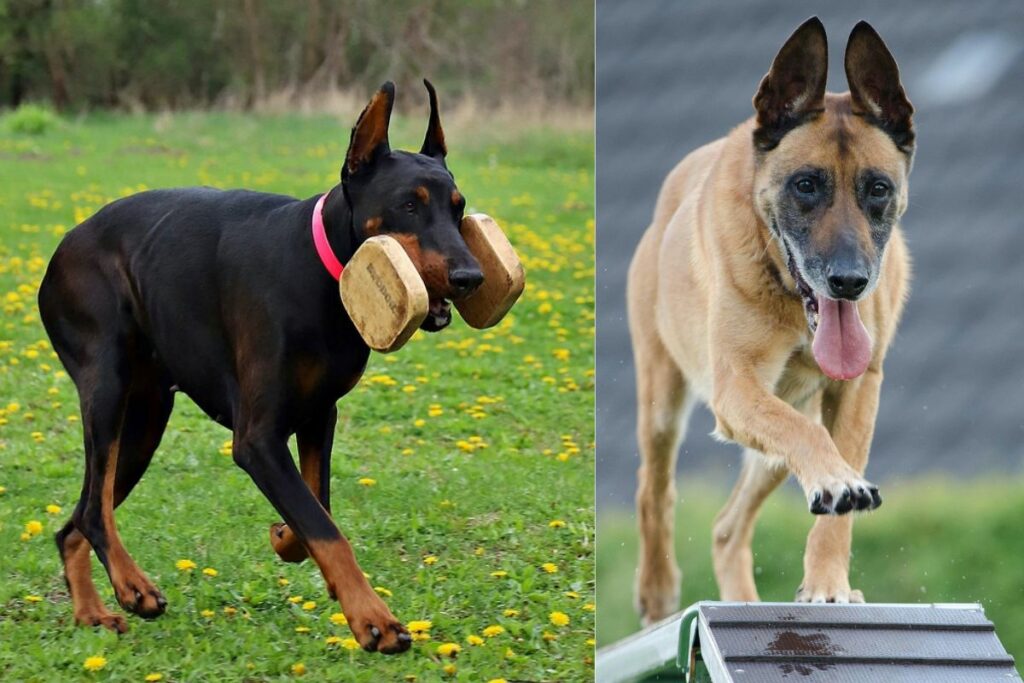Doberman Pinschers and Belgian Malinois often get confused, both boasting sleek physiques and reputations as intense working dogs. But beneath the surface similarities lie key differences in temperament, energy levels, and trainability. This guide dives into the distinct personalities of these powerful breeds, examining their histories, physical attributes, and behavioral nuances. Choosing the right breed requires understanding these crucial distinctions, whether you’re seeking a loyal companion or a dedicated guardian. Uncover the facts and discover which breed best suits your lifestyle.
Choosing a new furry friend, especially when you have a family and kiddos, is a big deal! If you’re on the hunt for a doggie hero to guard your loved ones and your home, you might be eyeing the Doberman or Belgian Malinois.
Both these pups are like the superheroes of the dog world—packed with energy, super eager to make you happy, and they love having a job to do.
Now, you might have heard some tales about Dobermans and Belgian Malinois being a bit on the fierce side. But hold up! According to the official dog standard for each breed, these pups aren’t supposed to be aggressive.
So, let’s dive into what makes these two dog breeds tick—looking at their looks, personalities, how much playtime they need, and a bunch more.
Doberman vs Malinois
Origin
Dobermans are super brave and always ready to watch over their humans. This makes a lot of sense because they were first bred to be a bodyguard for Louis Dobermann, who collected taxes way back in the 1800s. And that’s how the Doberman came to be—a dog that looked tough enough to keep trouble away.
These dogs aren’t just about looking tough; they’re also super loyal and reliable. Over time, Dobermans became popular with the police, the military, and even as helper dogs. They officially became a recognized breed by the American Kennel Club in 1908.
Now, let’s talk about the Belgian Malinois. These dogs started out in Belgium, and just like the Doberman, they have a job history. They were originally sheep herders, thanks to their intellect and hardworking attitude.
They came to America in 1911 and got their official recognition as a working dog breed by the American Kennel Club in 1959. Just like Dobermans, Belgian Malinois are also known for their smart brains and protective nature, making them great police and military dogs too.
Height and Weight
Dobermans are the big buddies compared to the more compact Belgian Malinois. Think of it this way: Dobermans can be just a smidge taller—but they can weigh a whole lot more!
Belgian Malinois are like the athletes of the dog world, standing about 22 to 26 inches tall and weighing between 40 and 80 pounds, which is pretty light and speedy. Dobermans, on the other hand, are the slightly taller team members, reaching heights of 24 to 28 inches and tipping the scales at a more hefty 60 to 100 pounds.
Appearance
Belgian Malinois have a neat, easy-care coat with a tough top layer and a dense under layer to keep them comfy in all kinds of weather. They come in shades of light brown to deep red, with some black on their ears and face, making them look pretty sharp.
These pups are like square-shaped athletes—strong, quick, and always ready for action. They’re made to handle the outdoors, showing off their herding dog capabilities with lots of energy and a proud look.
Dobermans sport a glossy coat that makes them look super athletic. Their fur is short and simple to look after. Most Dobermans are black with tan highlights, but they can also be red, blue, or light brown, with some special tan spots that add to their cool look.
Dobermans are medium-sized, muscular, and built for speed and stamina. They carry themselves with elegance and pride, full of energy and courage, always on the lookout, and super loyal to their family.
Temperament
Belgian Malinois are like the superstar employees of the dog world—they’re super smart, always ready to work, and love having a job to do. Plus, they form super tight bonds with their owners. This bond gets even stronger with lots of consistent training.
These dogs don’t like being left alone; they want to be right by your side, getting involved in activities. So, if you’re thinking of getting a Malinois, be ready to mix up their exercise routine and find fun ways to keep their clever brains busy.
Malinois are also amazing watchdogs. They’re always on alert, but they know how to stay cool. They’re super loyal to their family but might not be all that interested in strangers.
Dobermans are the brave hearts of the dog family, always on guard to protect their people and their homes. They’re incredibly smart and need lots of exercise and brain games to keep them happy.
Dobermans learn fast, so they’ll keep you thinking of new ways to challenge them. Starting socialization early is key for Dobermans. It helps them be more open and friendly with new people and experiences, making them well-rounded companions.
Family Bond
Dobermans are like superhero bodyguards for your family. They’re super loyal and stick to their humans like glue, earning them the nickname “Velcro dogs.” This loyalty and bravery make them awesome family pets and top-notch protectors. They might become especially close to one person, but with the right socializing, they can learn to be friendly with everyone.
They’re usually cool with other pets, like cats, especially if they grow up together, and they tend to get along better with dogs of the opposite sex, though sometimes they might butt heads with same-sex doggie pals.
Belgian Malinois, on the other hand, aren’t the easiest dogs for first-time dog owners. They’re confident and build super strong connections with their people. They’re not usually aggressive, but they’re definitely not the shy type, either. With a strong urge to chase, it’s important to introduce them early to any other pets or little kids you have at home.
This, along with good old-fashioned socializing and training, helps them play nice. While a well-trained Malinois can make friends with other dogs, they can be a bit protective of their space and toys. And, some Mals might always prefer to be the only dog in the house.
They’re better suited for families with older kids since their playful bumps can accidentally knock over little ones. Just like the Doberman, taking the time to train your Belgian Malinois from a young age is the best way to help them become a well-behaved part of the family.
Health and Exercise Needs
Dobermans are pretty easygoing when it comes to health and grooming. They don’t shed much, just a couple of times a year. To keep your Doberman looking sharp, a quick brush once or twice a week and a bath when needed will do the trick. Don’t forget to clip their nails and brush their teeth with doggy toothpaste, too.
These dogs are super active and need an owner who can keep up. They need at least 90 minutes of exercise every day, though 2 hours is even better, plus some fun playtime. If you love long walks or runs, a Doberman could be your perfect exercise buddy.
Belgian Malinois are not the type to lounge around. They’re always up for action, whether it’s a job or just playing. If you get a Malinois, be ready to spend lots of time keeping them busy. They love long walks, runs, and playing games like fetch to stay happy and out of mischief.
Malinois are generally healthy, but watch out for eye issues. They need a bit more grooming than Dobermans because of their longer coats, so regular brushing is a must to keep them looking good.
Trainability
Dobermans are smarty-pants dogs, ranking super high in doggie IQ—right up there after some of the brainiest breeds like Border Collies and Poodles. They catch on to new tricks pretty fast and really want to make you happy.
But, just like some smart folks, they can be a little stubborn. When you’re training a Doberman, you’ve got to be kind but firm and always cheer them on with treats and praise when they get things right.
Training a Belgian Malinois? Totally doable. They’re brainy and loyal, always ready to listen and learn. Plus, they love to please their people. With their mix of smarts and eagerness, training a Malinois can be pretty smooth sailing.
Life Span
Belgian Malinois usually live between 14 and 16 years, which is a pretty long time for dogs! Dobermans, on the other hand, tend to have a bit of a shorter lifespan, living about 10 to 12 years.
Conclusion
In the comparison of Doberman vs. Belgian Malinois, it’s clear that both breeds stand out as exceptional guard dogs, each with their own unique qualities. Dobermans, with their slightly shorter lifespan, are nonetheless healthy dogs known for their loyalty and protective instincts. They thrive with proper training, channeling their intelligence into becoming reliable guardians of the home.
On the other side, the Belgian Malinois, a herding breed, brings its tireless work ethic to the role of guard dog. These affectionate dogs also excel in a variety of tasks thanks to their high intelligence and eagerness to please.
Both breeds require proper training to harness their full potential as protection dogs. While the Doberman, knows as velcro dogs, may have a more imposing presence, the Belgian Malinois’s agility and endurance are unmatched.
Ultimately, whether choosing the steadfast Doberman or the versatile Belgian Malinois, owners can look forward to having a loyal, affectionate, and highly capable guard dog by their side.
Choosing between a Doberman and a Belgian Malinois depends entirely on lifestyle and experience. Both are intelligent, active breeds requiring experienced owners committed to training and socialization. Dobermans, while protective, are generally more affectionate companions suited to active families with secure containment. Malinois possess higher energy and a stronger prey drive, making them ideal for working roles or highly active individuals experienced with demanding breeds. Ultimately, understanding these nuanced differences is key to finding the perfect canine partner.

